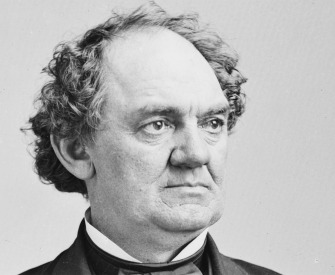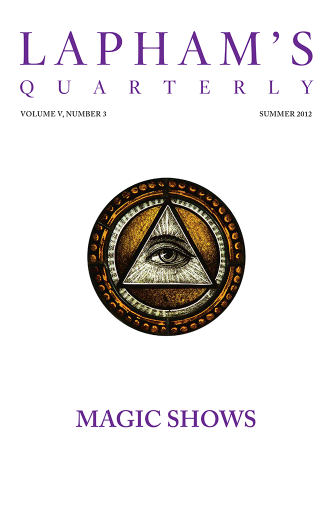Newspapers always excite curiosity. No one ever lays one down without a feeling of disappointment.
—Charles Lamb, 1833On the Contrary
Gloria Steinem is fed up with conversational double standards.
Here are three popular assumptions: (1) Women talk about themselves, personalize, and gossip more than men do. (2) Men would rather talk to groups of men than to mixed groups, and women prefer mixed groups to all-female ones. (3) Women speakers and women’s issues are hampered by the feminine style of their presentation.
After recording the conversational themes of single-sex and mixed-sex groups, for instance, social psychologist Elizabeth Aries found that men in all-male groups were more likely to talk about themselves than were women in all-female ones. Men were also more likely to use self-mentions to demonstrate superiority or aggressiveness, while women used them to share an emotional reaction to what was being said by others.
Phil Donahue, one of the country’s most experienced interviewers, capsulizes the cultural difference between men and women this way: “If you’re in a social situation, and women are talking to each other, and one woman says, ‘I was hit by a car today,’ and the other women will say, ‘You’re kidding! What happened? Where? Are you all right?’ In the same situation with males, one male says, ‘I was hit by a car today.’ I guarantee you that there will be another male in the group who will say, ‘Wait till I tell you what happened to me.’”
If quantity of talking about oneself is a measure of “personalizing,” and self-aggrandizement through invoking the weakness of others is one characteristic of gossip, then men may be far more “gossipy” than women—especially when one includes sexual bragging.
In addition, subjects introduced by males in mixed groups are far more likely to “succeed” than subjects introduced by women, and, as Aries concluded, women in mixed groups are more likely to interact with men than with other women. Thus, it’s not unreasonable to conclude that mixed groups spend more time discussing the lives and interests of male participants than of female ones.
On the other hand, research by Aries and others shows that women are more likely to discuss human relationships. Since “relationships” often fall under “gossip” in men’s view, this may account for the frequent male observation that women “personalize” everything. Lecturers often comment, for instance, that women in an audience ask practical questions about their own lives, while men ask abstract questions about groups or policies. When the subject is feminism, women tend to ask about practical problems. Men are more likely to say something like, “But how will feminism impact the American family?”
To quote Donahue, who deals with mostly female audiences: “I’ve always felt a little anxious about the possibility of a program at night with a male audience. The problem as I perceive it—and this is a generalization—is that men tend to give you a speech, whereas women will ask a question and then listen for the answer and make another contribution to the dialog. In countless situations, I have a male in my audience stand up and say, in effect, ‘I don’t know what you’re arguing about; here’s the answer to this thing.’ And then proceed to give a mini-speech.”
Aries also documented the more cooperative, rotating style of talk and leadership in women-only groups: the conscious or unconscious habit of “taking turns.” As a result, women actually prefer talking in their own single-sex groups for the concrete advantages of both having a conversational turn and being listened to. On the other hand, she confirmed research that shows male-only groups to have more stable hierarchies, with the same one or several talkers dominating most of the time.
As Aries points out, no wonder men prefer the variation and opportunity of mixed-sex audiences. They combine the seriousness of a male presence with more choice of styles—and the assurance of at least some noncompetitive listeners.
Women’s more gentle delivery, “feminine” choice of adjectives, and greater attention to grammar and politeness have been heavily criticized. Linguist Robin Lakoff pioneered the exposure of “ladylike” speech as a double bind that is both required of little girls and used as a reason why, as adults, they may not be seen as forceful or serious. (Even Lakoff seems to assume, however, that female speech is to be criticized as the deficient form, while male speech is the norm and thus escapes equal comment.) Sociologist Arlie Hochschild also cites some survival techniques of racial minorities that women of all races seem to share: playing dumb and dissembling, for instance, or expressing frequent approval of others.
But whether this criticism of female speech patterns is justified or not, there is also evidence that a rejection of the way a woman speaks is often a way of blaming or dismissing her without dealing with the content of what she is saying.

Still Life, by Edward Collier, 1699.
For instance, women speakers are more likely to hear some version of “You have a good point, but you’re not making it effectively,” or “Your style is too aggressive/weak/loud/quiet.” It is with such paternalistic criticisms that male politicians often dismiss the serious message of a female colleague, or that husbands turn aside the content of arguments made by their wives.
It is also such criticisms that allow women candidates to be rejected without dealing with the substance of the issues they raise. When Bella Abzug of New York and Gloria Schaeffer of Connecticut both ran for political office in one recent year, each was said to have a personal style that would prevent her from being an effective senator: Abzug because she was “too abrasive and aggressive,” and Schaeffer because she was “too ladylike and quiet.” Style was made the central issue by the press, and thus became one in the public-opinion polls. Both were defeated.
There are three anomalies that give away this supposedly “helpful” criticism. First, it is rarely used when a woman’s message is not challenging to male power. (How often are women criticized for being too fierce in defense of their families? How often was Phyllis Schlafly criticized for being too aggressive in her opposition to the Equal Rights Amendment?) Second, the criticism is rarely accompanied by real support, even when the critic presents himself (or herself) as sympathetic. (Women political candidates say they often get critiques of their fund-raising techniques instead of cash, even from people who agree with them on issues.) Finally, almost everyone, regardless of status, feels a right to criticize. (Women professors report criticism of their teaching style from young students, as do women bosses from their employees.)
Just as there is a conversational topic that men in a group often find more compelling than any introduced by a woman (even when it’s exactly the same topic, but reintroduced by a man), or a political issue that is “more important” than any of concern to women, so there is usually a better, more effective style than the one a woman happens to be using.
Men would support us, we are told, if only we learned how to ask for their support in the right way. It’s a subtle and effective way of blaming the victim.
©1983 by Gloria Steinem. Used with permission of Gloria Steinem, feminist activist and writer.

Gloria Steinem
From “The Politics of Talking in Groups.” The granddaughter of the president of the Ohio Woman Suffrage Association from 1908 to 1911, Steinem traveled on a fellowship to India in 1956, an experience that inspired her first book, The Thousand Indias. Her exposé of Hugh Hefner’s Playboy Club, published in 1963, earned her notoriety and acclaim, and in the 1970s she emerged as a leader of the women’s liberation movement, helping to found the Coalition of Labor Union Women and Women Against Pornography.


